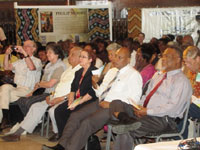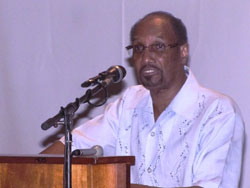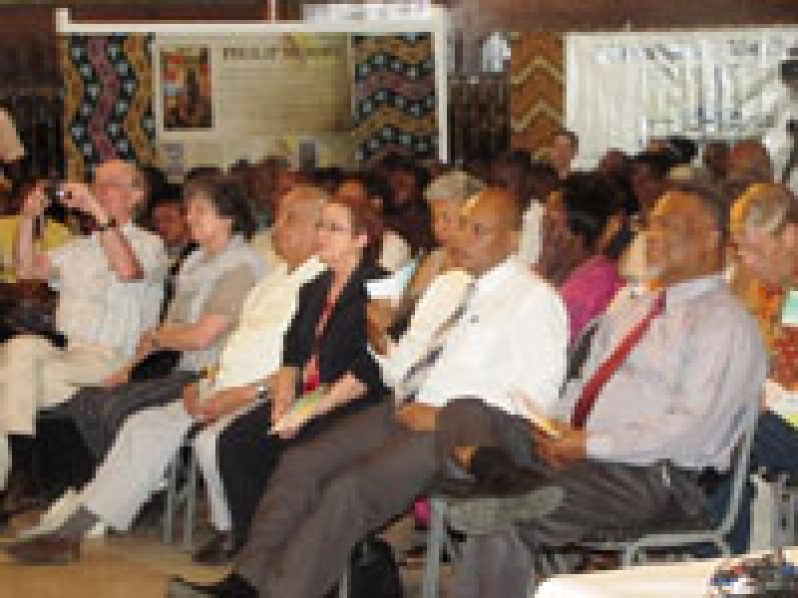AS THE month of March comes around, many Guyanese are wont to reflect on the life of late Former President, Dr. Cheddi Jagan (March 22, 1918 – March 6, 1997) and his contributions to Guyana, as this was the month he began and ended his earthy journey.
His passage did not go unmarked, as Guyana’s biggest airport, as well as the beautiful colonial building that was once his official residence during his premiership now bear his name. Yet, is this enough?
Not according to distinguished Guyana-born historian, Dr. Alvin Thompson, who believes monuments are a valuable tool for remembering our history. As he observed at a recent public lecture:
QUOTE: ‘An airport and a building in his name are fine, but they do not tell the story of his struggle to achieve freedom and promote progress and dignity among the Guyanese people in the way it ought to be told’
“An airport and a building in his name are fine, but they do not tell the story of his struggle to achieve freedom and promote progress and dignity among the Guyanese people in the way it ought to be told.
“The importance of statues is that they “stand in your face; you simply cannot ignore them. And because of this circumstance, both locals and foreigners have to recognize their existence and often ask about the contributions that the persons depicted have made to the nation.”
QUOTE: The importance of statues is that they “stand in your face,” you simply cannot ignore them; and because of this circumstance, both locals and foreigners have to recognize their existence and often ask about the contributions that the persons depicted have made to the nation.
 Noting that Caribbean people have not generally been taught to appreciate the significance of monuments in the same way as, for example, Europeans, and that there is generally a striking indifference to the issue of monuments, Thompson said this attitude often pervades even the highest echelons of our society. He gave as a fitting example the tendency among many of our leaders in Government of not recognizing the urgency or even the necessity of erecting monuments to the victims of colonialism.
Noting that Caribbean people have not generally been taught to appreciate the significance of monuments in the same way as, for example, Europeans, and that there is generally a striking indifference to the issue of monuments, Thompson said this attitude often pervades even the highest echelons of our society. He gave as a fitting example the tendency among many of our leaders in Government of not recognizing the urgency or even the necessity of erecting monuments to the victims of colonialism.
In further explaining that point, Thompson said people often do not see the need to invest what they see as scarce financial resources in the erection of a structure that is seen as more symbolic than functional; and the leaders appear at times to be afraid that the public would criticise them for “wasting” scarce resources, rather than spending them on roads, buildings, transport, health and so forth.
As relates to the Guyanese situation, Thompson said that the situation is compounded by the fact that, especially since the late 1950s, and certainly by the early 1960s, the two main ethnic groups have been jostling each other for political, social and cultural precedence which has acted as a constraint in identifying and honouring historical and present day national personalities in ways in which they deserve. As the lecture was relating to the present-day significance of the 1763 uprising, Thompson noted that even the monument commemorating the uprising has come in for serious criticism by some sections of the Guyanese population. Explaining, that many persons consider that a monument is expressive of a national personality, he said the public should be consulted in some way before action is taken.
As the lecture was relating to the present-day significance of the 1763 uprising, Thompson noted that even the monument commemorating the uprising has come in for serious criticism by some sections of the Guyanese population. Explaining, that many persons consider that a monument is expressive of a national personality, he said the public should be consulted in some way before action is taken.
He noted that failure to do so has resulted in great division in several countries, including some Caribbean ones. Case in point: The statue of The Mighty Sparrow erected in Trinidad in 2001 and the first statue erected to Bob Marley in Jamaica in 1983. The latter was pelted with stones and fruits at its unveiling. Even more controversial, says Thompson is one titled “Redemption Song”. Located in Emancipation Park in the heart of Kingston since 2003, this last statue depicts two starkly naked black persons (a male and a female) just emerging from a pool of water.
Thompson acknowledged that in the case of Cuffy, the leaders of the Peoples Progressive Party and the Peoples National Congress agreed to acclaim him as the nation’s first national hero. Countering arguments by some Guyanese who question his elevation to national hero status because of his procrastination in waging an all out war against his enslavers and his action in burying the gunpowder immediately prior to his suicide, he noted that we must realise that Atta and other insurgents accorded him full honours at his burial.
Proving his point, Thompson, quoted Anne Cameron, who wrote in 2007, “Despite this, the revolutionaries honoured him with the burial of a great chief, and killed two whites on his grave”.
Further proving that it is possible for leaders to span the historical and ethnic divides that have existed for some time over the question of national heroes, he cited the following instances:
In 1988, Dr Cheddi Jagan and Mr Moses Nagamootoo produced a statement on the 150th anniversary of emancipation, in which they declared that, “In the face of great odds, superior forces and arms, our early revolutionaries proved they could not easily be intimidated. Leaders such as Cuffy in Berbice, Quamina in Demerara and Damon in Essequibo laid down their lives in heroic struggles for freedom.
In 2002, President Bharrat Jagdeo is reported to have stated: Guyana holds] the honour in the history of this hemisphere of holding the first successful slave rebellion which overthrew the Dutch and [the insurgents] were in control of [Berbice for] over a year before (the rebellion) was brutally and ruthlessly smashed.
Not quite finished yet, Thompson had more to add about their care: “It is not only important to erect them; we need to maintain them in good repair. The sad reality is that a number of the statues to nationalist leaders in the regions are being neglected: Some of them have become garbage dumps, while birds leave copious droppings on them, which are only cleaned when a downpour of rain occurs”.
Thompson was born in Kitty in 1942. He is of Barbadian and Guyanese lineage. Having been educated at Queen’s College, he entered the School of African and Oriental Studies in 1965, and returned to the University of Guyana in 1969 to hold a lecture post.
In 1972, he became a lecturer at the University of the West Indies, and attained seniority in the post from 1977. In 2001, he attained professor status; and from 2008 to present, he has been holding the title of Professor Emeritus.
His Books include: The Haunting Past: Politics, Economics and Race in Caribbean Life (1997); Unprofitable Servants: Crown Slaves in Berbice (2002); Economic Parasitism: European Rule in West Africa 1880-1960 (2006); Flight to Freedom: African Runaways and Maroons in the Americas (2006); Confronting Slavery: Breaking through the Corridors of Silence (2010).
His scholarly achievements include: Commonwealth Fund for Technical Cooperation Award for Research in Ghana, July–August 1977; Fulbright Senior Scholar Award, tenable at the Research Institute for Study of Man; Principals Award for Excellence, U.W.I Cave Hill Campus, 2005; Vice-Chancellors Award for University-wide Excellence; Lifetime Award from the U.W.I press, and many more.
Thompson lectured on the historical and present-day significance of the slave uprising in one of a series of commemorative lectures, in honour of the 250th Anniversary of the 1763 Slave Revolt.



.jpg)








